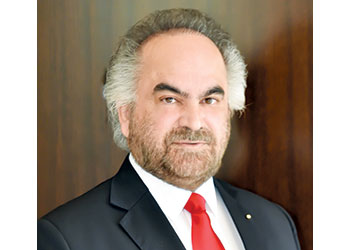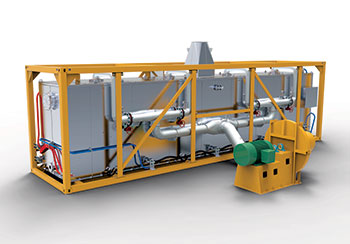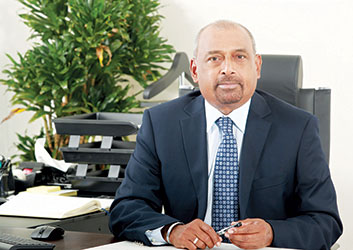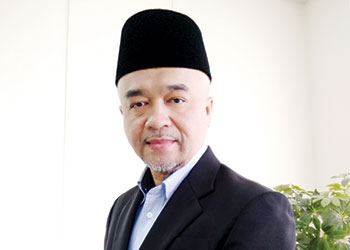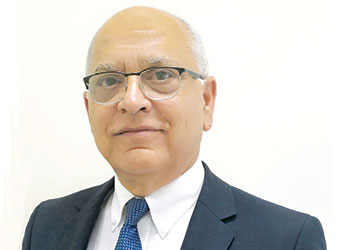
 Total focuses on innovation efforts on developing better, more sustainable energy
Total focuses on innovation efforts on developing better, more sustainable energy
MICHEL DE PUYDT, head of Law Department – IP and Technology at Total, tells ABDULAZIZ KHATTAK that strong IP protections for innovative technologies can help to stay competitive in the face of price volatility
As the hydrocarbon industry looks to overcome volatile prices, the drive to develop and protect intellectual property (IP) has become increasingly vital. Issues of commercialisation, technological and collaborative innovation, as well as patent infringement are rife within the industry, and overcoming these is crucial to ensure effective use of a company’s IP portfolio.
In an exclusive to OGN, Michel De Puydt, head of Law Department - IP and Technology at Total, says that while the need to preserve, manage and effectively utilise existing portfolios is imperative, yet new challenges within international mergers, shared technological advancements and a number of other issues have made the effective use of IP paramount to success.
He says the growth of innovation and digitalisation in the industry has affected the way organisations approach IP. Digitalisation is in support of the development of IP portfolios, for instance in terms of patent filing handling and subject matter protection
"Furthermore, companies like Total are also looking at innovating through partnerships and collaborations with third parties, and investing in start-ups. IP allocation is thereby a key component amongst others to be considered," says De Puydt.
Adding to that, he says strong IP protections for innovative technologies can help to stay competitive in the face of price volatility. However, these protections need to be put into balance with possible direct or indirect effects arising from volatility in the oil price as far as our industry is concerned, such as for instance expected revenue streams and budgets for IP.
With regard to the development of innovative technologies at Total, De Puydt says the company focuses on innovation efforts on developing better, more sustainable energy, ranging from reducing our carbon dioxide (CO2) emissions to committing to low-carbon energies and lobbying for a price on carbon, and seeks as a company and with its partners to meet the growing demand for energy while limiting the impact on the climate.
Amongst the new technologies are those like blockchain, which is finding its way into different industries, especially finance. However, De Puydt says, in the oil and gas industry, blockchain technology currently has more disruptive potential than actually presenting immediate, practical use-cases in the field of patents.
"This does not take away that blockchain could be used for optimising existing patent processes, as a support feature, in terms of gaining efficiency, and reducing resources or delays."
Looking forward, De Puydt sees patents to continue to have a key role to play in the way companies in the industry protect and strategise their technology assets, together with other forms of protection such as, for example,
trade secrets.
"In terms of trade secret issues, there are some trends that are becoming increasingly important, such as the way technical information is disclosed and accessed and whereby patents are sometimes perceived as more costly. So while patents do create value and will remain at the core of companies’ IP strategy, they may do so in conjunction with other forms of protection providing value," he explains.
However, on the other hand, there is this trend in society to be more open, in terms of information sharing and information access, and which is enhanced by digitalisation.
De Puydt says since patented inventions are public and thus no longer secret, they can contribute to this openness and enable different stakeholders to communicate more efficiently around proprietary technologies.
Furthermore, digitalisation and the need to have agile IP handling processes are mutually supportive, whereby existing IP processes are expected to be adapted to and evolve with the overall rapidly developing cycles in the field of digitalisation.
"All of this may have an influence in the shorter or in the longer term on IP, the way IP is perceived and what the efficiency of IP will be," says De Puydt.
"Also, with the industry moving from a more engineering-centred to more of a focus on software and data, there is the need to adopt efficient IP strategies in a context wherein certain manufacturing technologies are rather mature and in general have been in place or operational for more than a couple of decades.
"So Software, of course, has its role to play in terms of optimising operations, facilitating design of plans and installing operations, and the way we approach IP takes all these aspects into account," he adds
An issue with a company’s IP portfolio could be during a merger, and whether IP considerations come into play, will depend on the objectives and assets of the merger, says De Puydt.
He explains: "These IP considerations can range from issues surrounding access to patents or knowhow of the merged companies to freedom to operate matters that support or impact the valorisation or efficiency of the merger and its overall goals. These IP considerations become increasingly important if the merger has as one of its main goals to acquire a company’s IP portfolio per se."
Finally, a company needs to have a business strategy to ensure it can effectively plan the lifecycle of a patent or IP portfolio.
"One of the parameters that need to be taken into account is that patents become more and more expensive the older they get. At the end of a life of a patent, companies can have a closer look at where the patent is really necessary for their activities, and may drop a patent before its expiration due to the costs associated with it.
"Another aspect worth considering is tying the lifecycle of a patent to the lifecycle of a product, for instance in terms of patenting improvements or second generations of the same product," concludes De Puydt.




















































































